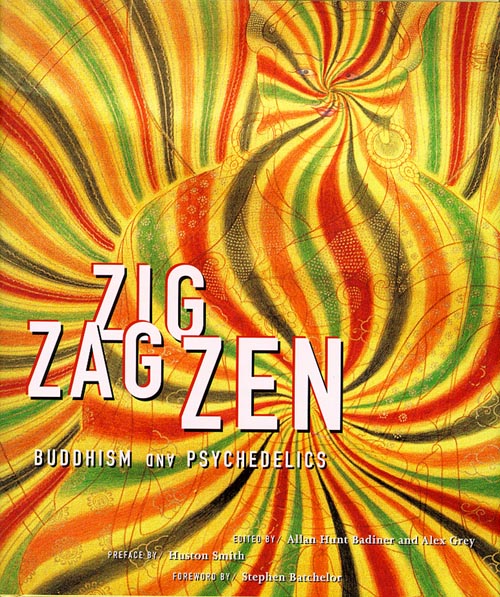
Allan Hunt Badiner , Alex Grey (Eds)
Chronicle Books, 2002
reviewed by Michael Ziegler
Michael Ziegler is a rabbi who leads Shir Hashirim Minyan in Berkeley, CA.
© Institute of Labor and Mental Health, Jan/Feb 2004

By dissolving the firm hold of the logico-rational mind over the perception of reality, entheogens propitiate, on the one hand, the appearance and observation of contents arising from pre-personal levels (their regressive aspect) and, on the other, the appearance and observation of contents arising from transpersonal levels (their transcendental aspect). Training in meditation is an excellent preparation for confronting the expanded states of consciousness which entheogens generate, and, conversely, the intensity and forthrightness of these expanded states can provide a great impetus to apply the achievements attained during meditation in an emphatic way.Even in the Buddhist community, however, there is a stigma attached to psychedelic drug use. Erik Davis, a contributor to the book, writes, "I suspect that a healthy chunk of self-identified practicing American Buddhists, keep at least occasional dates with the writhing world rending void lurking in the heart of psychedelic hyper-space. But I also suspect that, if asked to render judgment on such activities, most Dharma teachers would deliver a fat thumbs down. Indeed, psychedelic spirituality may be the only real heresy in American Buddhism." Buddhist teachers in the book speak about entheogen use in the distant past. To publicly confess or condone psychedelic use would be awkward because they are illegal and most (but not all) Buddhist teachers would say that they are prohibited from using them by the Buddhist injunction to abstain from intoxicants. The tremendous cultural fear and repression focused around drug use inhibits open dialogue about the positive role entheogens can play in spiritual awakening. Zig Zag Zen takes an important step in re-opening the discussion about the fundamental role psychedelics played in the creation of the contemplative institutions of Buddhist practice in the West. A clear discourse regarding the skillful use of entheogens is emerging in books like Dr. Stanislov Grof's LSD Psychotherapy and in Kelamine: Dreams and Realities by Karl Jansen, M.D., Ph.D. The logical sequel to the Zig Zag Zen anthology would address the sacred use of entheogens in the post-modern context.